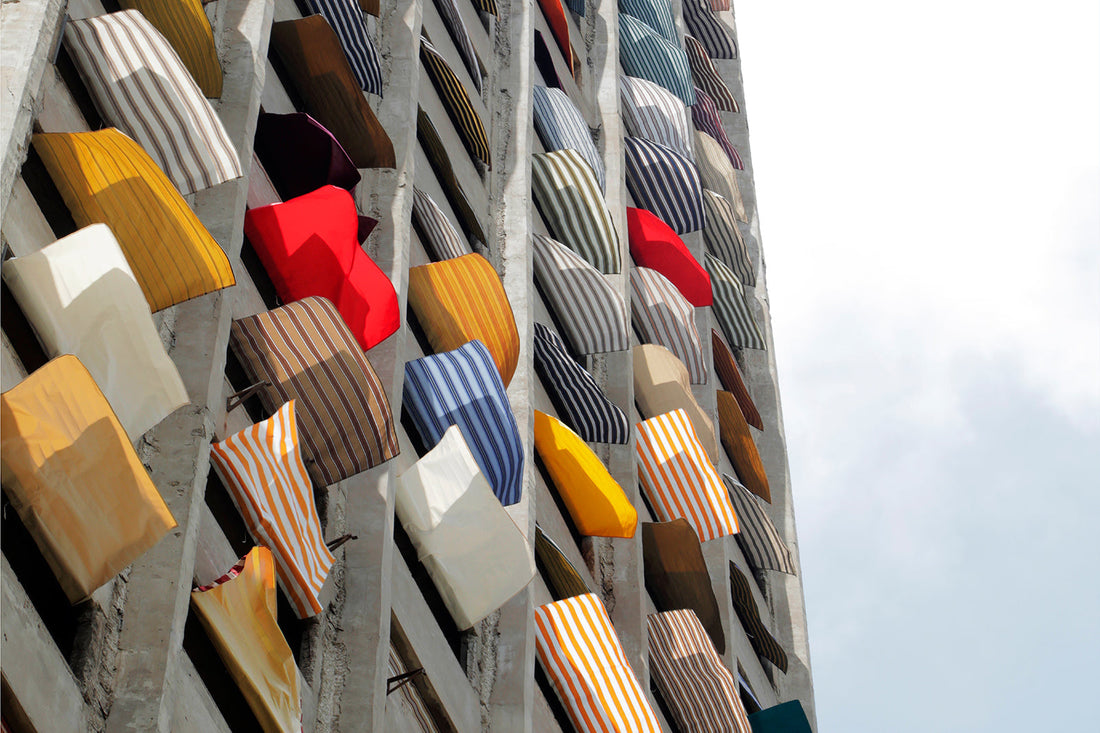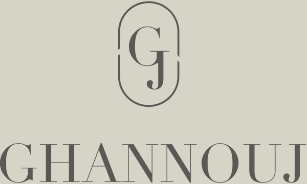
Share
Jad El Khoury: Reimagining Post-War Architecture Through Public Art and Diasporic Memory
From Beirut to Oslo, multidisciplinary artist Jad El Khoury transforms ruins into living canvases—exploring identity, migration, and the healing power of temporary beauty.
In the aftermath of war, what becomes of buildings too wounded to live and too stubborn to die? For multidisciplinary artist Jad El Khoury, they become canvases. They become questions. They become, briefly, things of beauty, but more importantly, they become symbols of resilience and hope.
"For the civil war generation," he tells us, "I want these bitter accidental monuments to shimmer—not with horror, but with colour. For the post-war generation, I want them to see what division leads to."
Jad El Khoury's work occupies a powerful tension: it is both fragile and public, both poetic and deeply political. From Beirut to Oslo, his installations tell stories of transformation—of cities, of bodies, of memory itself.
Rewriting the Skyline
A trained architect who turned to art to engage more intuitively with space, Jad has long been drawn to the jagged ghosts of post-war architecture. As a child, he remembers being mesmerised by the raw concrete of Beirut's war-scarred buildings. "The Egg," a decaying cinema, caught his eye not for what it once was, but for what it had become: a monument to a city's unfinished mourning.
In 2018, he unveiled Burj El Hawa—his most iconic work—on Burj El Murr, an infamous sniper tower. He dressed its hollow shell with strips of colourful balcony fabric, the kind fluttering across Beirut's facades. This temporary transformation, captured by filmmaker George Azar, reimagined the tower not as a relic of war, but a symbol of collective breath. "The wind itself was part of the work," Jad says.
Temporality, he insists, is essential. "I would have liked the work to be permanent—if we had reached national reconciliation. But we haven't. Sectarianism still defines us. The tower still stands."
*Jad El Khoury Profile Pic - Photo credit Mohammed Tayyeb Ahmad
Home, Displaced
Jad moved to Norway in 2020, just two days after the explosion at Beirut Port. The transition was not one of hopeful exploration—it was a matter of survival. "I was physically in Oslo but mentally still in Beirut," he says. His farewell to Lebanon was not a celebration, but a string of funerals. Oslo offered refuge, but also isolation. Then slowly, it provided something else: perspective.
"Now, I try to disconnect the feeling of home from geography," he says. "Home is in people. In cultural differences. I no longer feel I belong entirely to Beirut or Oslo. My identity metamorphoses daily."

*Soft Sheilds 2023 Field research for Gallry Tanit exhibition - Photo by Sara Guldmyr
Migration and Material
His move north opened new conceptual terrains. One of the first spaces to welcome him was Losæter Garden, a communal project by the artist collective Future Farmers. A garden planted above a highway revealed how art can be gentle, generous, and quietly radical.
This inspired Soft Shields, a collaborative project that bridges Beirut and Oslo. Three years after the explosion, Jad returned to Beirut's hardest-hit neighbourhoods—Gemmayzeh, Mar Mikhael, Karantina—where he followed the trail of balcony curtains to meet residents still rebuilding. In exchange for stories, he offered new curtains, repurposing the old ones into an installation.
The result was a walking exhibition and two interconnected gallery shows—one in Beirut, one in Oslo. Along the way, he met people like Iskandar Dagher, an elderly poet who read verses dedicated to the volunteers who cleaned his home.
Memory as Material
Whether on a 40-story tower or a private balcony, Jad's work is an act of counter-memory. In Burj El Hawa, the wind wrote the poem. In Soft Shields, memory lived in the fabric and the people who welcomed him. "It's about creating new visual fictions," he says, "that allow us to see painful places differently—even if just for a moment."
This dance between memory and reinvention is a constant one. Sometimes, it takes the form of a giant curtain; other times, a shared meal. His recent work in Norway reflects this turn inward. "My graduation project was a picnic blanket," he laughs. "The curtains I once draped on buildings now lie on the grass, inviting people to gather."

*Soft Shields 2023 by Jad El Khoury - Photo by Sara Guldmyr
On Playfulness and Pain
The contrast in Jad's work—between colour and ruin—is no accident. It reflects what Eli Rizkallah of Plastik Magazine once called in an interview the Lebanese 'make-up on trauma' aesthetic. 'Look at Beirut,' he says. 'There's extravagant nightlife, beauty clinics, and luxury shops. But underneath, it's all coping. Colour is a kind of defiance, a bold statement of strength in the face of adversity.'
In this light, his installations aren't naive—they're necessary. "Art helps us live with grief. Not by fixing it, but by giving it a different texture."
A Dialogue with the Diaspora
Jad's work speaks across borders. For the Arab diaspora, especially younger generations, it models a kind of loving persistence—a way to stay connected to fractured homelands without idealising them. "The place you grew up in will follow you wherever you go," he says. "And you can still give back to it, even from far away."
Silence, Scale, and the Norwegian Shift
Living in Norway has humbled his work, both in form and scale. "I used to install curtains on high-rises. Now I lay them horizontally, for picnics." These gatherings aren't just aesthetic—they're spaces of conversation, exchange, and chance encounters. "They're about serendipity. About what happens when you share food and stories."
The Passerby as Collaborator
For Jad, public interventions dismantle the walls of institutions. "They make art accessible—especially in Lebanon, where so many people never step into a gallery. These works offer fiction, reframe memory, and create new ways of seeing."
Depending on the project, the passerby becomes a witness, a participant, or even a co-creator. 'In visual works, each viewer adds their interpretation. In relational works, the public is the process,' Jad emphasises, making the audience feel not just spectators, but integral parts of the artistic process.
As curator Mary Jane Jacob once said, it's the difference between artwork and the artist's work. Jad embodies both.
What's Next?
His dream spaces are guided more by instinct than strategy. "I follow coincidences," he says. Still, there are whispers of plans that he keeps close to his heart. "Public art requires patience, persistence, and navigating endless red tape. Nothing is guaranteed until it's installed."
And Finally, the Soundtrack
Jad's playlist, like his practice, is eclectic and emotional:
- Everywhere Home by Yom
- Piano Concerto in C Minor by Rachmaninoff
- Bedouin Too by Bedouin Burger
- Atab (Hady Zaydan remake) by Shah Abed & Hady Zaydan
- Vesna by DakhaBrakha
- Pygmy Love Song by Francis Bebey
- Flight Pattern by Uvula
Each track is a portal. Each note is a fragment of the many homes he carries.
* the cover image Burj El Hawa 2018 by Jad El Khoury - Photo credit Eli Abou Jaoudeh.
Jad El Khoury's Creative Profile is part of the August issue of The Ghannouj Gazette. Follow @ghannouj and @jadelkhoury.art for updates.


